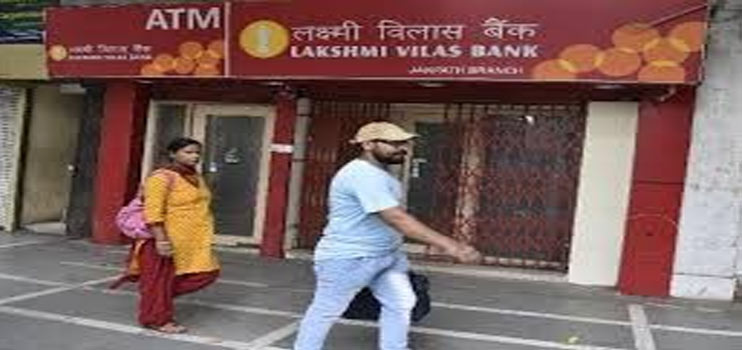The Monetary Policy Committee (MPC), the rate-setting body of the Indian central bank, did everything it could on Monday but the bond market was not convinced. The prices of government bonds, across maturities, dropped and the yield rose till the Reserve Bank of India (RBI) rejected all bids for the five-year and 10-year papers (Rs11,000 crore each). The auction of the other two papers – of two-year and 40-year maturity – almost entirely devolved on the primary dealers, the intermediaries that buy and sell government securities.
Following this, the 10-year paper yield, which rose quite a bit during the day, closed just at one basis point higher than Thursday’s close, but five-year paper yield rose higher. (One basis point is one-hundredth of a percentage point. Bond prices and yields move in opposite directions.)
As was widely expected, the RBI kept its policy rates unchanged and committed to continue with the accommodative stance as long as necessary – at least during the current financial year and into the next. All six members of the MPC decided unanimously on this.
Outlining the increasingly better outlook on growth, the RBI has pegged the growth forecast for next financial year at 10.5 per cent while highlighting the “cost push” risks on core inflation as consumer demand picks up.
Retail inflation which had dropped to 4.59 per cent in December – for the first time within the RBI mandate (4 per cent with a 2 per cent band on either side) in the current financial year – estimated to be around 5.2 per cent in the January-March quarter, 60 basis points lower than RBI’s earlier estimate. But the inflation forecast for the first half of next financial year (April-September) has been raised to the range of 5-5.2 per cent from 4.6-5.2 per cent earlier.
It’s a tight rope balancing act for RBI but there’s no surprise on this. Then, why did the bond yield rise?
Probably, the market wanted a calendar from the RBI on its bond buying through the so-called open market operations (OMO) and “twists”.
A twist – the Indian version of quantitative easing – refers to simultaneous purchase and sale of government securities. Under the twist or two-step OMOs, the RBI sells short-term papers and buys long-term ones, and manages the yield at both the shorter as well as longer end, bringing down the government’s borrowing. Banks, too, get the benefit since when the bond yield goes down, they make profits trading in government papers.
The RBI has not announced an OMO calendar but has extended the limit of bond portfolio kept under the so-called held to maturity (HTM) category. This will shield the bank treasuries from mark to market, or MTM, losses when the bond yield rises. MTM is an accounting practice of valuing the bonds at the prevalent market price and not the price at which it is bought. Since the bonds kept under the HTM category don’t need to be value at market price, banks are not hit by MTM losses even if their prices drop and yields rise.
Besides, the RBI has opted for a gradual restoration of banks’ cash reserve ratio (CRR), or the portion of deposits that the commercial banks keep with the RBI on which they do not earn any interest. The CRR had been cut by 1 percentage point last year to 3 per cent till March 2021. It will be raised to 3.5 per cent in the last week of March and 4 per cent in May. Indeed, the two-stage increase will suck out around Rs 1.5 trillion from the system but the RBI has promised to use the space thus created by other market instruments, hinting at OMO purchases.
The slew of liquidity easing measures also includes an extension of the marginal standing facility relaxation till September 30, allowing banks to raise money from the RBI window at 4.25 per cent; extension for the use of on-tap targed long-term repo operations or TLTRO funds for lending to non-banking financial companies; and deferment of the implementation of the capital conservation buffer by another six months to October 1. Finally, the central bank also announced retail investors’ direct access to the government bond market, digitally – something that has happened in very few markets globally such as the US and Brazil.
However, all these could not convince the bond market, which was looking for some concrete measures for easing the supply side pressures. The government’s gross borrowing for the current fiscal year has been raised by Rs80,000 crore to Rs13.5 trillion. And, the next year’s gross borrowing is being pegged at Rs12 trillion. The banking system’s current bond holding is already 30 per cent of its assets against the statutory 18 per cent.
A quick look at the borrowing calendar of the past decade tells us how herculean the task for the banking system is. In 2010, the gross borrowing was pegged at Rs4.2 trillion, which rose marginally in 2011 and veered between Rs5 trillion and Rs5.9 trillon in the next six years till 2017 before crossing Rs6.6 trillion in 2018. It dropped to Rs5.96 trillion again in 2019 and rose to Rs7 trillion in 2020.
By rejecting all bids for two papers, the RBI sent a signal that it would not like the yield to rise, but this may not be enough to ensure a smooth sailing of the massive government borrowing for the rest of the current fiscal year — and the next. The phenomenal rise in the underwriting commission of the primary dealers tells the story.
From less than one paise commission for Rs100 worth of bonds, it rose to 44 paise for the 40-year paper. For two other papers, for which all bids were rejected, the commission was 22-24 paise. This succinctly sums up the risks the primary dealers are taking for underwriting the bonds and keeping them in their books.
Normally, the market eats out of RBI Governor Shaktikanta Das’s hands but the size of the government borrowing is killing its risk appetite. It will listen to him when he walks the talk on easing liquidity.



